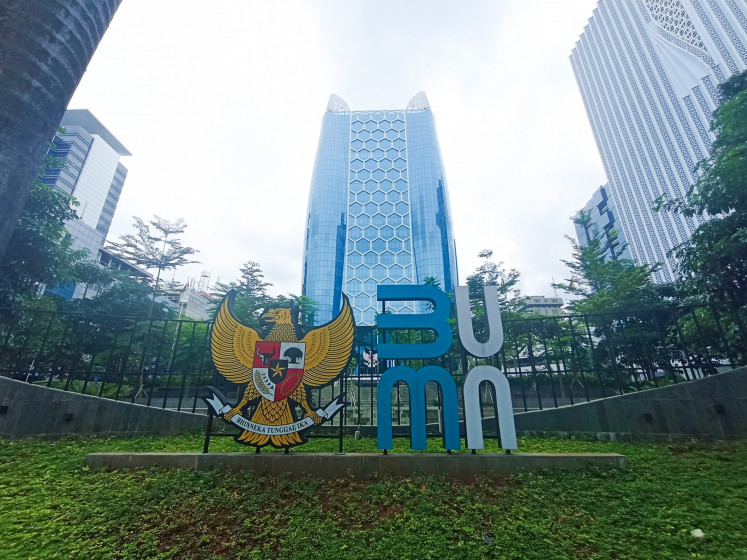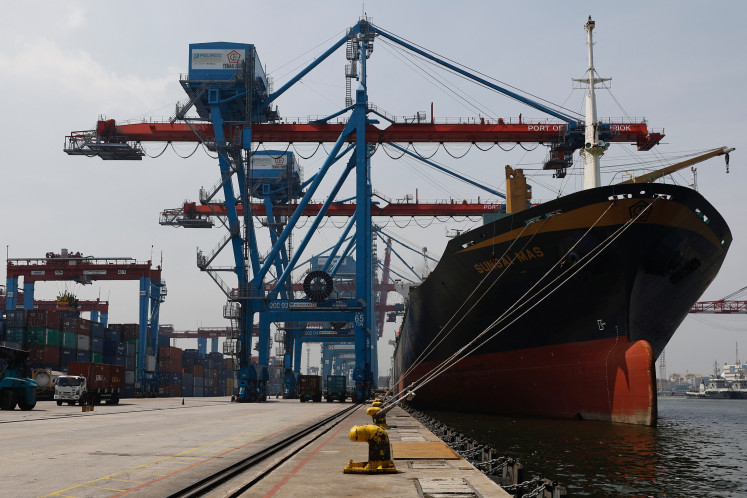Subsidence worsening in Bandung, Jakarta
Land subsidence is thought to be worsening in Bandung, West Java, and in Jakarta because of excessive withdrawal of groundwater without complimentary recovery efforts, a Bandung Institute of Technology (ITB) geologist said
Change text size
Gift Premium Articles
to Anyone

L
and subsidence is thought to be worsening in Bandung, West Java, and in Jakarta because of excessive withdrawal of groundwater without complimentary recovery efforts, a Bandung Institute of Technology (ITB) geologist said.
Speaking at his inauguration as a professor at the campus last week, Lambok Hutasoit said that he based his predictions on the results of his research using data from 1950 through the 2000s.
“Based on the data, simulations were made,” said Hutasoit who presented a speech entitled Numeric Simulation in Hydrology.
Cengkareng, in West Jakarta and Kemayoran in the east, were said to have suffered most from land surface erosion, where land had subsided 2 meters and 1.8 meters respectively.
“The causes are [due to] pumping water and burdens caused by new buildings. Those are human-made problems,” said Hutasoit who is also chairman of the association of Indonesian geologists.
Other factors, he added, included natural geological conditions in Jakarta, which is primarily based upon sand and clay, making the region even more unstable.
“Land subsidence is still occurring within a range of 5 centimeters to 10 centimeters annually, depending on the region. Different regions are more vulnerable to sinkage than others,” he said.
According to Hutasoit, a similar phenomenon has also been occurring in Bandung, which has experienced land subsidence of about half a meter due to similar issues.
He said groundwater that had already been pumped should be restored to fill soil pores.
As the population grows, however, rainwater absorbed by the land is decreasing because more buildings are being erected in water absorption areas.
According to Hutasoit’s simulation, Bandung has been experiencing a decrease of between 40 and 80 percent of its ground water. “The worst hit region is Cimahi, but the simulation also shows that the damaged areas will continue expanding to the east,” he said.
He added that restoring the absorption of water would help improve present conditions. “We need to return 164 million cubic meters of water to the ground each year to stabilize conditions,” he said.









